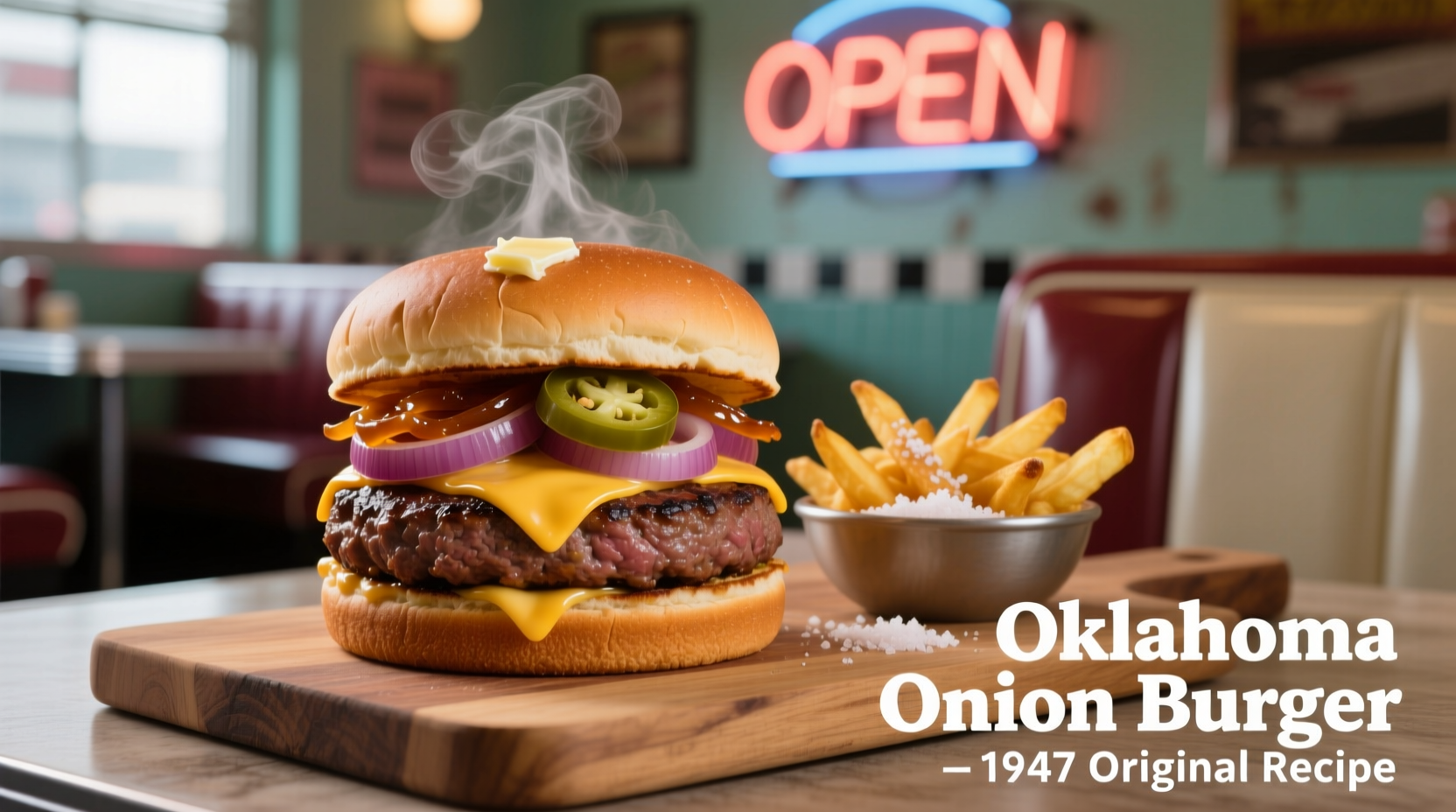Discover why food historians consider the Oklahoma onion burger one of America's most distinctive regional food creations. This comprehensive guide reveals the authentic preparation method, historical roots, and where to experience the genuine article across Oklahoma. Whether you're a culinary enthusiast or planning a food-focused trip, you'll learn everything needed to appreciate and recreate this beloved comfort food classic.
The Oklahoma Onion Burger Timeline: From Depression-Era Innovation to Cultural Icon
Understanding the evolution of this regional specialty requires examining its historical context. The Oklahoma onion burger emerged during challenging economic times when resourcefulness defined American cooking.
Originated in Oklahoma diners as an economical solution during wheat shortages. Chefs compensated for smaller meat portions with generous amounts of inexpensive onions.
Became a staple at Oklahoma roadside diners, particularly along Route 66. The distinctive cooking method—smashing onions directly into the patty—created a signature flavor profile.
Spread throughout Oklahoma with the growth of local diner chains. Became deeply embedded in Oklahoma's culinary identity.
Recognized as Oklahoma's official state hamburger in 2014. Gained national attention through food media, though authentic versions remain primarily available in Oklahoma.
What Makes an Oklahoma Onion Burger Unique
Many confuse regular hamburgers with onions as Oklahoma onion burgers, but key distinctions define the authentic version:
| Authentic Oklahoma Onion Burger | Standard Hamburger with Onions |
|---|---|
| Onions cooked directly into the patty | Onions served as topping |
| High onion-to-meat ratio (often 50:50) | Minimal onions relative to meat |
| Thin, smashed patty technique | Thicker formed patty |
| Onions become integral to meat texture | Onions remain distinct topping |
Authentic Preparation Method
The cooking technique defines the Oklahoma onion burger experience. Unlike standard burgers where onions serve as a topping, here they become part of the patty itself.
Essential components:
- Meat selection: 80/20 ground beef for optimal fat content
- Onion ratio: Equal weight of onions to meat (typically yellow onions)
- Cooking surface: Flat-top griddle for proper smashing technique
- Cooking method: Onions placed on griddle, meat patty smashed directly into onions
The magic happens when the onions release moisture that steams the meat while the meat fats caramelize the onions. This creates a distinctive flavor fusion impossible to achieve with standard topping methods.

Regional Authenticity Boundaries
While many restaurants nationwide now offer "Oklahoma-style" onion burgers, true authenticity remains geographically bound. Understanding these context boundaries helps identify genuine versions:
- Authentic zone: Primarily Oklahoma, especially along historic Route 66 corridors
- Acceptable variations: Texas panhandle and southern Kansas (due to cultural overlap)
- Imitation zone: Restaurants outside these regions often miss key elements like proper onion ratio or cooking technique
- Warning signs: Onions served as topping rather than integrated into patty, insufficient onion quantity, thick formed patties
The Oklahoma Historical Society confirms that authentic preparation requires the distinctive smashing technique where onions become incorporated into the meat structure during cooking—a process that fundamentally changes both ingredients' textures and flavors.
Classic Oklahoma Onion Burger Recipe
Recreating this regional specialty at home requires attention to specific details that distinguish it from ordinary burgers.
Ingredients for Two Burgers
- ½ pound 80/20 ground beef
- ½ pound yellow onions, thinly sliced
- Salt and freshly ground black pepper
- 2 hamburger buns
- Optional: American cheese, mustard, pickles
Step-by-Step Preparation
- Heat griddle or heavy skillet to medium-high
- Spread sliced onions evenly across cooking surface
- Place beef portions directly on top of onions (do not pre-form patties)
- Immediately smash meat into onions using a sturdy spatula
- Cook 3-4 minutes until edges crisp and onions caramelize
- Flip entire patty-onion mass and cook 2-3 minutes more
- Add cheese if desired during final minute of cooking
- Transfer to bun with preferred condiments
The critical step is smashing the raw meat directly into the raw onions—this creates the signature flavor integration. Pre-cooking either component defeats the purpose of authentic Oklahoma onion burger preparation.
Where to Experience Authentic Oklahoma Onion Burgers
While you can recreate this dish at home, experiencing it in its cultural context enhances appreciation. These Oklahoma establishments represent the tradition:
- Cattleman's Steakhouse (Oklahoma City): Historic Route 66 institution serving onion burgers since 1947
- Johnnie's Grill (Tulsa): Family-owned since 1957, known for perfecting the onion-to-meat ratio
- Hideaway Pizza (Multiple locations): Despite the name, their Oklahoma onion burger honors tradition while adding creative options
- Rocky's Corner (El Reno): Celebrated at the annual Onion Burger Festival for authentic preparation
The Oklahoma Tourism Department recognizes these establishments for maintaining traditional preparation methods that define the regional specialty. During the El Reno Onion Burger Festival each April, multiple vendors compete to showcase the most authentic versions.
Modern Adaptations and Common Mistakes
As this regional specialty gains national attention, understanding proper adaptations versus fundamental errors becomes important:
Acceptable variations:
- Using different onion varieties (Vidalia, red onions) while maintaining proper ratio
- Adding minimal Worcestershire sauce to the meat for depth
- Experimenting with bun types while keeping classic preparation
Authenticity-breaking errors:
- Pre-cooking onions before adding to meat
- Using insufficient onion quantity (must be near 1:1 ratio)
- Forming traditional patties rather than smashing technique
- Serving onions as topping rather than integrated component
Food historians note that the Oklahoma onion burger's essence lies in its Depression-era ingenuity—using abundant, inexpensive onions to enhance limited meat portions. Modern versions that abandon this fundamental principle miss the dish's historical and cultural significance.











 浙公网安备
33010002000092号
浙公网安备
33010002000092号 浙B2-20120091-4
浙B2-20120091-4